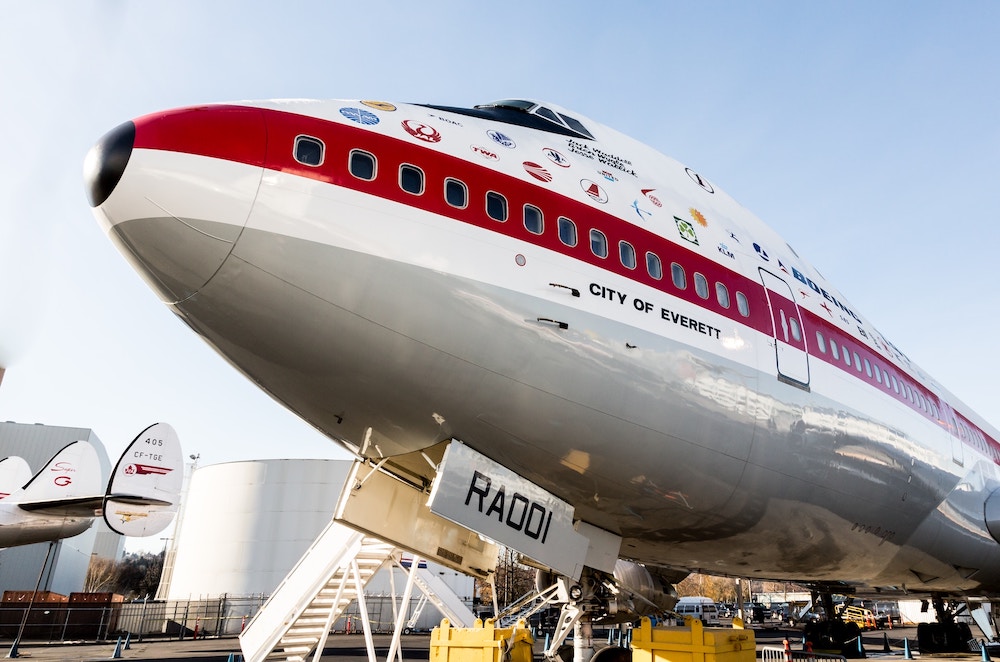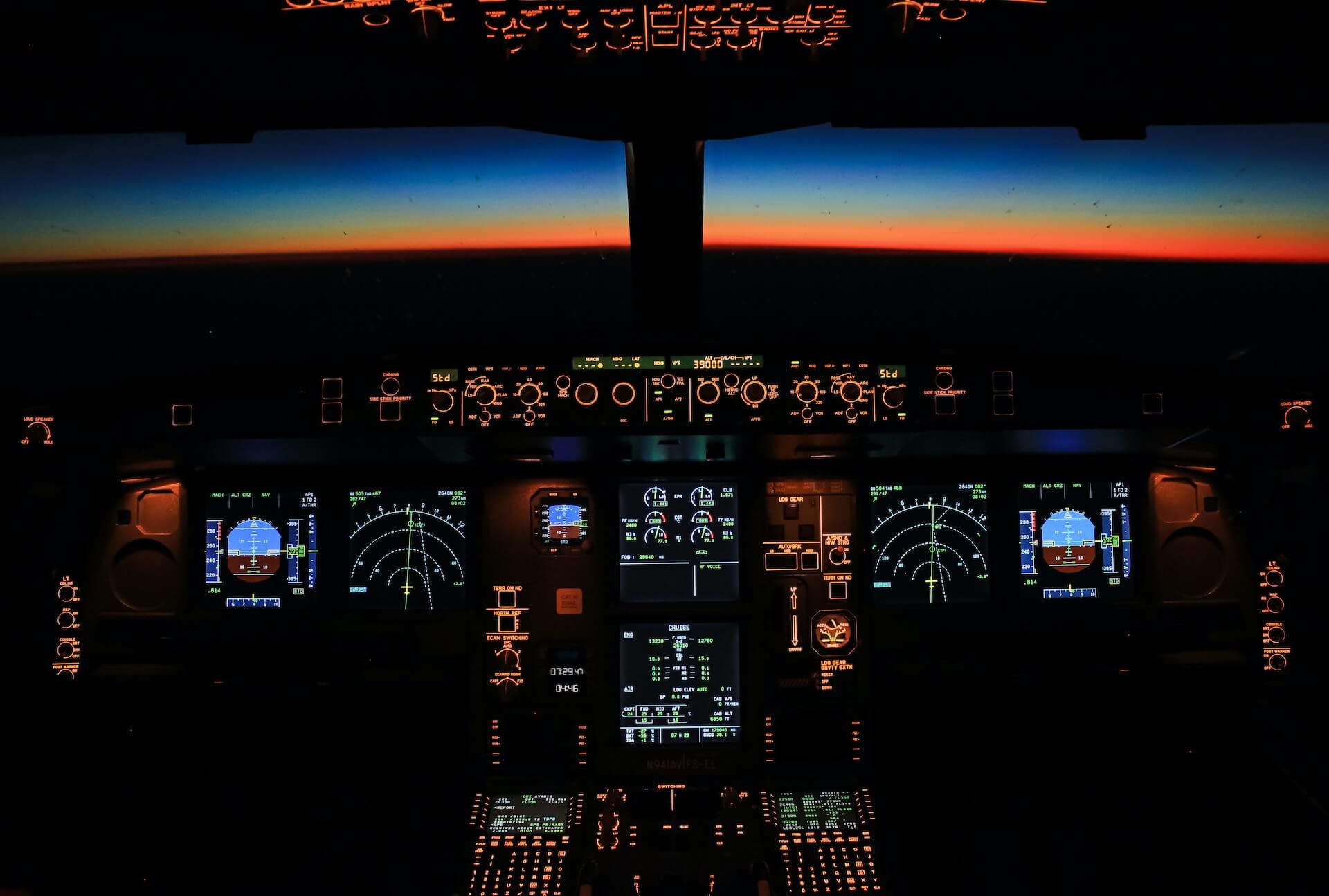
Aviation is an exciting market. Traditionally, it was marked by slow progress because of a significant challenge of “red tape” and heavy regulations in developing new systems. But emerging technology developed by other industries (and some that are still in development) has made its way to aviation to completely revolutionize processes that were once cumbersome.
Artificial intelligence, blockchain, the Internet of Things, and other emerging technologies all play a role in completely revolutionizing the logistics of aviation and aircraft maintenance. Of course, these technologies will eventually find their way into the cockpit, but for right now, we’re seeing them on the ground side of aviation in areas like procurement.
What Is Blockchain?
Most of you probably heard of Blockchain because of Bitcoin and other cryptocurrencies. Well, blockchain is what makes them a secure currency, or at least a secure commodity.
Blockchain is a secure ledger system. It provides security, and once users sign a timestamp or an action using Blockchain, it becomes immutable. More importantly, the transaction history of the purchase, whether it be a crypto coin or otherwise, is available for anyone to view.
This was a mandatory requirement of cryptocurrencies, where all transactions and exchanges were completely secure. But this isn’t so different than what would be required in aviation, especially with high levels of liability involved, in some of the significant components.
Another thing that makes Blockchain so powerful and unique is that it will eventually afford the ability for large, costly components, namely engines and entire airplanes, to be bought and sold, i.e., completely procured without a broker. The magic in Blockchain is it eliminates the need for a third party to facilitate the transaction. This will save enormous amounts of money and time.
What Are The Advantages Of Using Blockchain In Aviation Procurement?
Right now, the aerospace industry is just starting to scratch the tip of the iceberg in blockchain applications, mainly because the technology is still so new and not widely understood. However, it’s proving useful to aviation procurement in multiple ways.
Traceability
As it applies to aviation procurement, the first key feature of blockchain is traceability. Aviation components— and aircraft in general—are extremely regimented in the tracking and processing of parts. However, throughout the lifespan of a component like an engine (which could be used in multiple aircraft), it becomes quite challenging to trace all the various transactions. What’s more, a buyer would want to know about all of the major maintenance items and services performed on the item.
Engines and parts cost well into the millions per unit, especially for large airlines. Therefore, these engines alone can be as expensive as a private jet. The sale of airliner engines for large aircraft can also be brokered as an aircraft itself. When an engine is removed from a decommissioned aircraft, it undergoes a thorough inspection, and sometimes even an overhaul, before being resold.
But what happened along the way? What is the history of that engine? Tracking a single aircraft through a legacy system generates enough paperwork from the beginning to the end of its lifetime, filling a large room. Engines are also tracked similarly, leading to an enormous amount of paperwork. Blockchain, however, revolutionizes this process, as it digitizes all the information and securely locks it forever.
Blockchain captures and stores all the actions conducted during the engine’s lifetime, including engine transactions and records of those who authorized work to be done and approved inspections. Once this information is recorded on the ledger (blockchain), it remains there for life. The time, date stamp, and signature become immutable and cannot be altered. No other system exists that can achieve this level of permanence and security.
Immutability
What makes Blockchain so unique as compared to other technologies is that is immutable. By this, we mean that is unable to be changed or altered.
When two parties agree to the terms of a sale and sign that ledger, it cannot be undone; it is permanent. No one can go in and alter that ledger, ever.
This is crucial in aviation procurement because maintenance and operational tracking are imperative. On commercial aircraft, various metrics, such as landings and engine cycles, are recorded and constantly monitored. These metrics must be accurately tracked over time to determine the aircraft’s operational history. For instance, it is essential to know how many times an aircraft has been fully pressurized in flight and how many times the engine has been cycled. Any falsification of these numbers would be considered fraudulent and illegal.
Using blockchain to record transactions and maintenance events, all events have been signed off as maintenance action and locked away for life. There is no way those can be changed or altered.
Why Is Traceability Important In The Aviation Industry?
Traceability is more critical to aviation procurement than probably in any other industry.
Whenever there is any event on the aircraft, regardless of its origins, the entire maintenance log for the aircraft is meticulously reviewed to determine its role in the incident. Even if the maintenance and flight operations records do not contribute to the event, the operator can still face serious consequences if they are in disarray. Both the National Transportation Safety Board (NTSB) and the Federal Aviation Administration (FAA) thoroughly examine every detail. They will conduct a more extensive investigation if they discover any discrepancies or irregularities.
It is also a major concern for the rest of the fleet to determine if a faulty component was an isolated incident to one single aircraft or a fleetwide trend. Traceability does this. Maintenance analysts can comb through enormous mountains of data, which will be big data, to find trends in a very short period of time across an entire fleet of aircraft; they can then target these components if it is a trend and request a technical bulletin be released by the FAA for fleet ride repair if there is a trend on that component.
What Are Some Other Key Tech Trends In Aviation?
Let’s take a look at a few of the key trends in aviation today that are revolutionizing procurement and the industry as a whole.
One of the major problems facing commercial aviation is a technician crisis. That alone is an article in itself. But just know that more people are leaving it than are coming in the best way to bridge. The current gap is through technology that allows the existing technicians to do more with less.
Internet of Things (IoT)
The Internet of Things (IoT) is a fascinating technology that creates an inner web of digital sensors. They can report big data and be compiled.
Basically, you can think of the IoT as a mesh of sensors that can be applied to all sorts of different systems and subsystems on the aircraft. This is an integral part of big data. These sensors produce an enormous amount of information which is uploaded into cloud-based servers and then analyzed.
Predictive maintenance is one of the most impressive things about the IoT regarding aviation. Since it will be spread out across an entire fleet of aircraft and is constantly monitored from the second aircraft starts-up to shut-down to observe every conceivable variance in the systems, big data can scrub the status across the entire fleet and see if there are any common themes regarding abnormalities.
That information has been scrubbed across the fleet over time; then, maintenance analysts can start building a foundation for common failure points. Then they can determine more accurate times for engine overhauls and scheduled maintenance cycles.
Machine Learning
Machine learning goes into predictive analytics. It can be used to anticipate mean times between failures so that parts can be replaced before they fail, which rolls into the Internet of Things.
Another area of aviation where this is particularly insightful is predicting delays. Machine learning is used to scrub mountains of data to find commonalities and predict whether a delay will occur.
To learn more about machine-learning in aviation procurement, read AI in Aviation: The Future of Buying & Selling Parts. Additionally, you can find out more about overall industry developments in Current Aviation Trends and the Future of the Airline Industry.
Parting Thoughts About Technology in Aviation Procurement
ePlane is committed to using the latest technology to make inventory management and aviation procurement transactions smoother, more secure, and more user-friendly. Most importantly, we want you to be able to find the right part that you need for the price you need to get it out and get it to you when and where you need it; these tools or exciting trends to see in aviation and we’re only scratching the surface right now.
Make sure to check out our marketplace and our other services at the top of the menu!
Written by John McCoy
John McCoy is a professional copywriter focusing on aviation and aerospace. He spent over two decades in the aviation industry, working in many different capacities and roles in administration, airport operations, and aircraft maintenance, along with being a private pilot. These experiences give him a unique vantage point on all things aviation.



